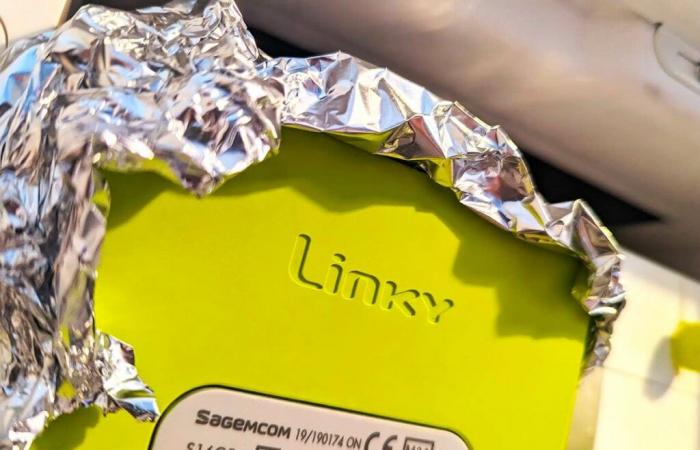The Linky meter, deployed by Enedis since 2015, has raised many questions. Among the controversial practices, wrapping the meter with aluminum foil has appeared. This method, supposed to protect against electromagnetic waves, raises questions about its effectiveness and safety. Let's take a closer look at why this approach is not only ineffective but potentially dangerous.
The myths around the Linky meter and electromagnetic waves
The Linky meter uses CPL (Power Line Power) technology to transmit consumption data. This method has fueled fears about exposure to electromagnetic waves. But, it is essential to understand that:
- Linky broadcasts are much lower at regulatory thresholds
- The National Frequency Agency (ANFR) and ANSES have confirmed the meter security
- Common household appliances emit more waves than Linky
Despite these facts, some consumers continue to believe that aluminum foil could protect them. This belief is based on the principle of Faraday cagea device that effectively blocks electromagnetic fields. However, the application of this concept to the Linky meter via a simple aluminum foil is highly questionable.
The table below compares the electromagnetic emissions of different devices:
| Device | Emission level (V/m at 30 cm) |
|---|---|
| Linky meter | 0,1 |
| TV | 10 |
| Microwave | 50 |
Risks and ineffectiveness of aluminum on the Linky
Using aluminum foil to cover the Linky meter presents several major problems:
- Inefficiency : A single layer of aluminum does not create an effective Faraday cage
- Risk of overheating : Aluminum may prevent normal heat dissipation
- Fire danger : Overheating can, in extreme cases, cause a fire
- Interference with operation : May disrupt data transmission and consumption readings
Enedis, the French electricity network manager, strongly advise against this practice. Linky meters are designed and installed according to strict safety standards. Any unauthorized modifications may compromise these standards and potentially void the equipment warranty.
Safe and effective alternatives for the worried
For those who remain concerned about electromagnetic waves, there are safer, scientifically validated approaches:
- Distance : Move living spaces away from the meter
- Overall reduction : Limit the use of electronic devices
- Medical consultation : If symptoms persist, consult a healthcare professional
It is vital to note that theelectrosensitivityalthough a source of real suffering for certain individuals, has no established scientific basis in connection with Linky meters. Studies carried out by theWorld Health Organization (WHO) were unable to demonstrate a direct correlation between exposure to low-level electromagnetic fields and the reported symptoms.
Towards an enlightened understanding of Linky
The Linky meter represents a significant advance in modernization of the French electricity network. It allows more efficient energy management, thus promoting ecological transition. Rather than looking for potentially dangerous solutions like using aluminum, it is better to get information from reliable sources.
L’National Health Security Agency (Anses) and the Energy Regulatory Commission (CRE) provide objective information on the subject. These institutions ensure that the deployment of Linky meters complies with safety and public health standards.
Ultimately, wrapping your Linky meter in aluminum foil is a practice to avoid. Not only does it provide no proven benefit, but it can create real risks for home security. The best approach remains to rely on the recommendations of experts and competent authorities, thus guaranteeing the safe and effective use of this technology in the service of the energy transition.






